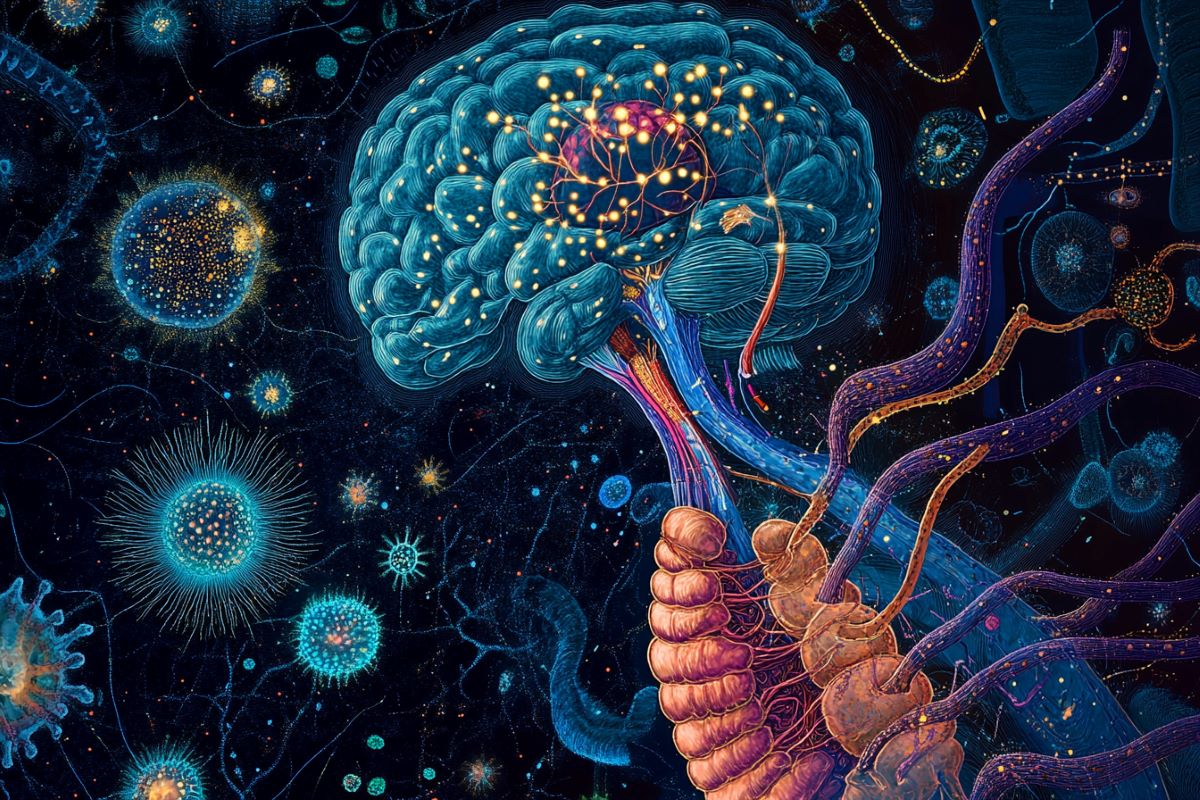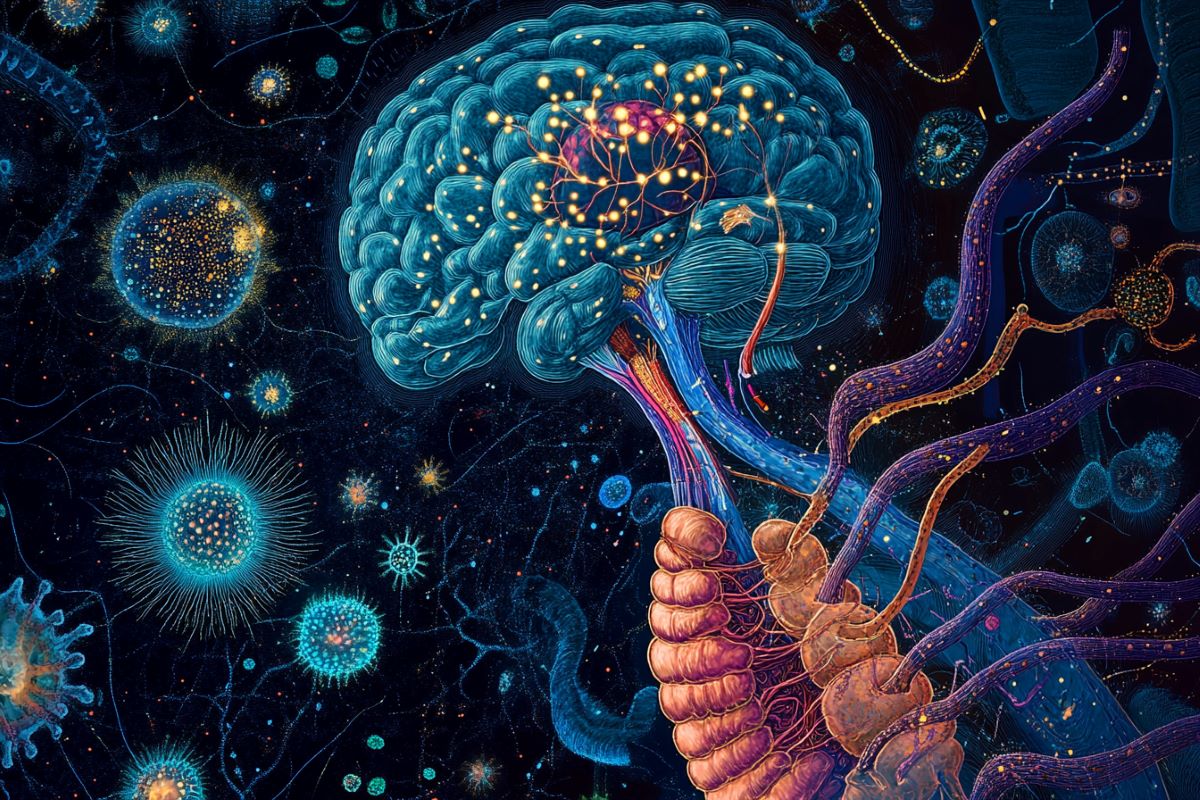
Summary: Recent research has uncovered compelling evidence that the gut microbiome interacts with the brain through the vagus nerve. In a study involving germ-free mice, scientists noted a significant reduction in vagal nerve activity, which reverted to normal upon the introduction of gut bacteria.
The study also found that when antibiotics were administered to conventional mice to eliminate gut bacteria, there was a decrease in vagal nerve activity. However, this activity was reinstated once microbiome-derived intestinal fluids were reintroduced. Key metabolites such as short-chain fatty acids and bile acids were identified as crucial activators of vagal neurons.
These metabolites send signals to the brainstem, establishing a clear communication pathway from the gut to the brain. This research enhances our understanding of the gut-brain axis and holds potential for the development of new therapies targeting neurological and gastrointestinal issues.
Key Insights
- Gut Microbiome Influence: Germ-free mice displayed significantly diminished vagal nerve activity, which normalized after exposure to gut bacteria.
- Role of Metabolites: Short-chain fatty acids and bile acids produced by the gut microbiome actively stimulated vagus nerve activity.
- Potential for New Treatments: Insights into the vagal-mediated communication between the gut and brain could pave the way for novel therapies for neurological and digestive disorders.
Source: UCLA
The latest study conducted on animal models sheds light on the role of the vagus nerve in the communication between the gut microbiome and the brain, filling a significant knowledge gap in this area.
Led by Kelly G. Jameson during her Ph.D. research at UCLA’s Hsiao Lab, the study demonstrates a clear cause-and-effect relationship between gut microbiota and vagal nerve function.

Though the vagus nerve has been traditionally seen as a facilitator of communication between the gut microbiome and the brain, direct evidence of this connection was previously scarce.
The research team led by Jameson discovered that germ-free mice experienced significantly lower vagal nerve activity compared to their bacteria-colonized counterparts. Upon introducing gut bacteria from normal mice to these germ-free subjects, their vagal activity returned to baseline levels.
In additional experiments, when antibiotics were administered to the small intestines of healthy mice, a drop in vagal activity was observed. However, these changes did not affect germ-free mice. Once the antibiotics were cleared and replaced with intestinal fluids from conventional mice, vagal activity was restored, underscoring the pivotal role of the microbiome.
Crucially, the study pinpointed specific gut-produced metabolites like short-chain fatty acids and bile acids that could stimulate vagal activity via designated receptors.
These metabolites activated various groups of neurons within the vagus nerve, each showing distinct response characteristics. This activation pathway extended to neurons located in the brainstem, thereby validating the gut-brain communication link.
The findings indicate that the gut microbiome plays a regulatory role in the production of certain metabolites that activate the vagus nerve, facilitating the transmission of chemical signals between the gut and the brain. This enhances the existing knowledge about the gut-brain axis and opens avenues for developing therapies for neurological and digestive disorders.
About this neuroscience research update
Author: David Sampson
Source: UCLA
Contact: David Sampson – UCLA
Image Credit: Neuroscience News
Original Research: Open access.
“Select microbial metabolites in the small intestinal lumen regulate vagal activity via receptor-mediated signaling” by Kelly G. Jameson et al. iScience
Abstract
Select microbial metabolites in the small intestinal lumen regulate vagal activity via receptor-mediated signaling
This research posits that the vagus nerve is integral to the communication between the gut microbiome and the brain, backed by activity-based evidence. Findings show that germ-free mice exhibit lower vagal tone compared to their colonized counterparts, which normalizes following microbiota restoration.
Introducing antibiotics into the small intestines of conventional mice—unlike germ-free mice—set off an acute decline in vagal activity, which was reinstated when intestinal filtrates from conventional mice were reapplied.
Microbiome-dependent compounds such as short-chain fatty acids, bile acids, and 3-indoxyl sulfate stimulate vagal activity through a receptor-dependent mechanism.
Sequential perfusion of each metabolite type activated both shared and individual neuronal subsets with varying response dynamics.
Increases in vagal activity triggered by metabolites corresponded with the activation of neurons in the brainstem.
This research reveals that the gut microbiome governs the levels of specific metabolites in the intestinal lumen that differentially stimulate vagal afferent neurons, highlighting the microbial influence on chemosensory signaling for gut-brain communication effectiveness.









